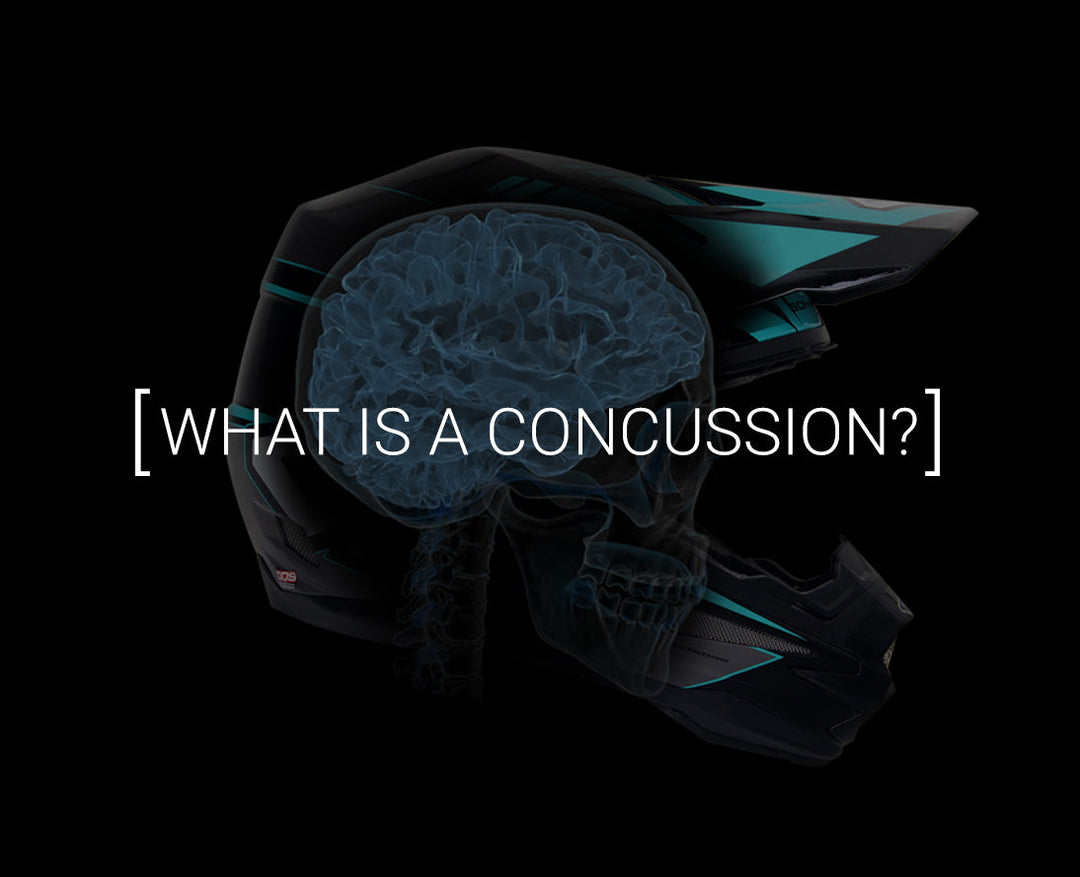What to do if I Suspect a Concussion

In a recent story, we provided a definition for concussions, or mild Traumatic Brain Injuries (mTBI). But what should motorcycle or bicycle riders do if they suspect they’ve incurred a concussion? To get an answer this question, we turned once again to Dr. Paul Reiman, Staff Physician, Concussion Program Medical Director for the Alpinestars Mobile Medical Unit.
How can a rider know if he or she has suffered a concussion?
There are many, many different symptoms. Loss of consciousness mandates that it’s a concussion, however you do not have to lose consciousness to have a concussion. There can be headache, dizziness, balance problems, fatigue, loss of memory, emotional disturbances (being too happy or sad). In supercross, a rider might complain that the stadium lights are too bright and even ask that they be turned off. The athlete might feel dazed, stunned, or foggy. Later on, there might be sleep disturbances. Basically, it’s the symptoms associated with what people informally call “ringing your bell.”
What should a rider do if he or she is experiencing some of those symptoms?
They should stop riding and seek medical care. In any athletic event, if you have a potential concussion, you’re immediately disqualified from participating until it’s worked up and either ruled in or ruled out. If it’s ruled in, the athlete isn’t allowed to compete for the rest of that day.
After a rider has suffered a concussion, how long should he or she wait before returning to riding?
It varies, and at the time of the initial evaluation, it’s very difficult to predict how long it will be. About 90 percent of all sports-related concussions get better in seven to 10 days, but 10 to 15 percent do not. Outside of dizziness being a poor prognostic factor that it will take seven to 10 days, we can’t predict how long it will take.

Loss of consciousness mandates that it’s a concussion, however you do not have to lose consciousness to have a concussion. There can be headache, dizziness, balance problems, fatigue, loss of memory, emotional disturbances.
Is there a way for the rider to know when the recovery is complete?
Yes, this is part of the protocol that all professional sports follow, and that most high-level amateur sports follow. It’s a sequential evaluation. Most organizations will use a computerized cognitive test to help determine if the brain physiology has returned to normal. Then it’s a gradual return to the sport—gradually increasing the physical and mental stresses on the athlete before they’re put back into an athletic situation. On physical exam, we look at many, many different things, reviewing how the athlete tells us they’re feeling, but also looking at a number of visual things. There’s a Visual Ocular Motor Screening [VOMS, which examines the systems responsible for integrating balance, vision, and movement], and we’re looking at the ability to have proper balance. That’s obviously critical for the motocross athlete, but it also helps us to determine if they’re ready to go back. You’ve got to combine the physician evaluation, the neurocognitive test, and the return-to-ride, return-to-play program.
What are some ways to decrease the chances of suffering concussion?
Use proper equipment, and have proper conditioning for the sport that you’re trying to do. With good conditioning, you’re less likely to crash or have that rapid acceleration or deceleration that jolts the brain against the inside of the skull, because you have better control of your head.
SIGNS AND SYMPTOMS OF CONCUSSION*
Physical
- Headache
- Nausea
- Vomiting
- Balance problems
- Fatigue
- Sensitivity to light
- Numbness/tingling
- Dazed
- Stunned
Emotional
- Irritable
- Sad
- More emotional
- Nervous
Cognitive
- Feeling mentally “foggy”
- Feeling slowed down
- Difficulty concentrating
- Difficulty remembering
- Forgetful of recent information and conversations
- Confused about recent events
- Answers questions slowly
Sleep
- Drowsiness
- Sleeping more than usual
- Sleeping less than usual
- Difficulty falling asleep
*Source: American Medical Society for Sports Medicine 2013 Position Stand


 US
US
 UK
UK




Leave a comment